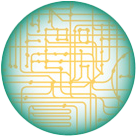Mapping Perturbations in a Naturally Evolved Fungal Garden Microbial Consortium
Authors:
Ruonan Wu1* ([email protected]), Margaret W. Thairu2, Yuqian Gao1, Chaevien S. Clendinen1, Jennifer E. Kyle1, Marija Velickovic1, Nathalie Munoz1, Carrie D. Nicora1, Kelly Stratton1, Samantha Obermiller1, Priscila M. Lalli1, Josie G. Eder1, Vanessa Paurus1, Aivett Bilbao1, Matthew E. Monroe1, Ronald J. Moore1, Paul Piehowski1, Cameron R. Currie2, Lisa Bramer1, Kristin E. Burnum-Johnson1
Institutions:
1Earth and Biological Sciences Directorate, Pacific Northwest National Laboratory; 2University of Wisconsin–Madison
Goals
This early career research project is dedicated to achieving transformative molecular-level insights into microbial lignocellulose deconstruction through the comprehensive and informative view of underlying biological pathways provided by the integration of spatiotemporal multi-omic measurements (i.e., proteomics, metabolomics, and lipidomics). A focus of this project is to uncover the mechanisms that drive cooperative fungal–bacterial interactions resulting in degradation of lignocellulosic plant material in the leafcutter ant fungal garden ecosystem. This approach will provide the knowledge needed for a predictive systems-level understanding of fungal–bacterial metabolic and signaling interactions that occur during cellulose deconstruction in an efficient, natural ecosystem.
Abstract
Understanding inter-kingdom interactions is critical for predicting the metabolic outcomes of environmental perturbations to microbial processes. Biological samples, however, are often complex and heterogeneous. Thus, it is challenging to detect spatial and temporal variation in microbial interactions and activities.
In this study, the research team used six independent naturally evolved leafcutter ant fungal garden consortia that are biologically complex and known to achieve active lignocellulose degradation primarily mediated by Leucoagaricus (Khadempour et al. 2021) as the model system. A pathogenic fungus, Escovopsis, was introduced to one side of each consortium and proliferated toward its middle section. This introduction created an infection gradient as well as contrasting microbial compositions on the two sides of the consortium. To elucidate the active inter-kingdom interactions and their metabolic outcomes within this dynamic system, the team applied multi-omics (i.e., metaproteomics, lipidomics, and metabolomics) integrated with microscale imaging to capture shifts in microbial community members and map their detected activities (Veličković et al. 2024).
Deep metaproteomics reveal microbial population and functional dynamics along the infection gradient. High selectivity and sensitivity in peptide identifications was achieved with a Thermo Fisher Orbitrap Eclipse Tribrid mass spectrometer equipped with a front-end High Field Asymmetric Waveform Ion Mobility Spectrometry (FAIMS) interface. The research leveraged a reference database containing 50 million proteins of known consortium members, which were grouped into >24 million clusters based on sequence similarity, to annotate the high-resolution tandem mass spectrometry spectra with stringent matching criteria. A total of 263,404 clusters were detected in the metaproteome data with relatively high representations of fungal, bacterial, and plant proteins followed by archaeal and insect proteins.
To identify patterns in the omics data, the team developed a method that leverages unsupervised machine learning algorithms to automatically recognize regularities across the infection gradient. Over 400 metabolites and 500 lipids exhibited significant trends (adjusted p-value<0.05). Combining these trends with the metaproteome data provided pathway-level species-specific interaction patterns. These methods recognized antagonistic interaction patterns between native and pathogenic fungal species. Leucoagaricus metabolic activities associated with carbohydrate metabolism and secondary metabolite biosynthesis decreased with increasing Escovopsis infection. Bacterial metabolic activities increased with fungal infections in some of the consortia, suggesting an active community response and potential inter-kingdom interactions under the impact of fungal infection. Interactions unique to the infection interface mapped complex activities underpinning both attack and defense metabolic strategies utilized by consortium members.
These spatiotemporal multi-omics measurements provided an integrated road map to efficiently harness microbiome data for a better understanding of microbial interactions and community response to a perturbation. In addition, the measurements provided a predictive systems-level understanding of how symbiotic fungal-bacterial metabolic and signaling interactions enable the fungal garden ecosystem to thrive and degrade lignocellulose in dynamic environments.
References
Khadempour, L., et al. 2021. “From Plants to Ants: Fungal Modification of Leaf Lipids for Nutrition and Communication in the Leaf-Cutter Ant Fungal Garden Ecosystem,” mSystems 6(2). DOI:10.1128/mSystems.01307-20.
Veličković, M., et al. 2024. “Mapping Microhabitats of Lignocellulose Decomposition by a Microbial Consortium,” Nature Chemical Biology. DOI:10.1038/s41589-023-01536-7.
Funding Information
The Pacific Northwest National Laboratory (PNNL) is a multi-program national laboratory operated by Battelle for the DOE under contract DE-AC05-76RL01830. This program is supported by DOE, BER, under the Early Career Award Program. A portion of this work was performed in the William R. Wiley Environmental Molecular Sciences Laboratory (EMSL), a national scientific user facility sponsored by BER and located at PNNL.
